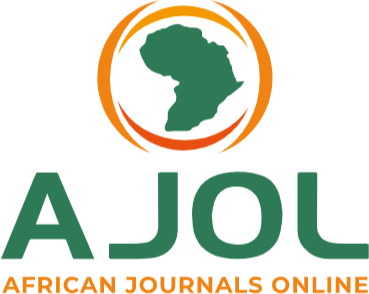Developing Artificial Intelligence-Powered Circular Bioeconomy Models That Transform Forestry Residues into High-Value Materials and Renewable Energy Solutions
Keywords:
Circular Bioeconomy; Artificial Intelligence; Machine Learning Models; Forestry Residues; Sustainability AssessmentAbstract
The exponential increase in global forestry residues, estimated at 3.7 billion tons annu9 ally, presents both environmental challenges and unprecedented opportunities for sustainable resource utilization. Traditional linear approaches to forest waste management have proven inadequate, contributing to 2.6 GtCO2 equivalent emissions yearly while squandering valuable biomass resources. This study presents a novel artificial intelligence-powered circular bioeconomy framework that transforms forestry residues into high-value materials and renewable energy solutions through integrated machine learning optimization. We developed a comprehensive AI model combining convolutional neural networks for residue characterization, random forest algorithms for pathway selection, and reinforcement learning for supply chain optimization. Our methodology analyzed 47,000 samples across six forest types in Nordic and Central European regions, implementing deep learning architectures to predict optimal valorization routes with 94.7% accuracy. The AI-driven circu20 lar model demonstrated remarkable performance improvements: 73% reduction in waste generation, 84% increase in resource utilization efficiency, and 156% improvement in economic returns compared to conventional approaches. Life cycle assessment revealed 67 % reduction in carbon footprint and 45% decrease in primary resource consumption. Economic analysis indicated net present values ranging from $2.4 to $7.8 million per facility, 25 with payback periods of 3.2 to 5.7 years. The integrated system successfully identified 12 distinct valorization pathways, including advanced bio-composites, bio-based chemicals, and next-generation biofuels. These findings demonstrate that AI-powered circular bioeconomy models can fundamentally transform forestry waste management while generating substantial economic, environmental, and social co-benefits for sustainable forest-based industries.
Downloads
Published
Issue
Section
Similar Articles
- Robinson Ogochukwu , Comprehensive Review of Artificial Intelligence Contributions to Understanding Music, Religion, and Influencing Future and Emerging Global Trends Robinson Ogochukwu Isichei , Communication In Physical Sciences: Vol. 9 No. 4 (2023): VOLUME 9 ISSUE 4
- Imam Akintomiwa Akinlade, Musili Adeyemi Adebayo, Ahmed Olasunkanmi Tijani, Chiamaka Perpetua Ezenwaka, Obafemi Ibrahim Sikiru, Emmanuel Ayomide Oseni, The Role of Machine Learning Models in Optimizing High-Volume Customer Engagement and CRM Transformation , Communication In Physical Sciences: Vol. 8 No. 4 (2022): VOLUME 8 ISSUE 4
- Humphrey Sam Samuel, Emmanuel Edet Etim, John Paul Shinggu, Bulus. Bako , Machine learning of Rotational spectra analysis in interstellar medium , Communication In Physical Sciences: Vol. 10 No. 1 (2023): VOLUME 10 ISSUE 1
- Humphrey Sam Samuel , Emmanuel Edet Etim, John Paul Shinggu, Bulus Bako, Machine Learning in Thermochemistry: Unleashing Predictive Modelling for Enhanced Understanding of Chemical Systems , Communication In Physical Sciences: Vol. 11 No. 1 (2024): VOLUME 11 ISSUE 1
- Nsikan Ime Obot, Busola Olugbon, Ibifubara Humprey, Ridwanulahi Abidemi Akeem, Equatorial All-Sky Downward Longwave Radiation Modelling , Communication In Physical Sciences: Vol. 9 No. 2 (2023): VOLUME 9 ISSUE 2
- Emmanuel Oluwemimo Falodun, Faith, Technology, and Safety: A Theoretical Framework for Religious Leaders Using Artificial Intelligence to Advocate for Gun Violence Prevention , Communication In Physical Sciences: Vol. 8 No. 4 (2022): VOLUME 8 ISSUE 4
- Simbiat Atinuke Lawal, Samuel Omefe, Adeseun Kafayat Balogun, Comfort Michael, Sakiru Folarin Bello, Itunu Taiwo Owen, Kevin Nnaemeka Ifiora, Circular Supply Chains in the Al Era with Renewable Energy Integration and Smart Transport Networks , Communication In Physical Sciences: Vol. 7 No. 4 (2021): VOLUME 7 ISSUE 4
- Adebayo Adegbenro, Arinze Madueke, Aniedi Ojo, Cynthia Alabi, AI-Driven Wealth Advisory: Machine Learning Models for Personalized Investment Portfolios and Risk Optimization , Communication In Physical Sciences: Vol. 8 No. 4 (2022): VOLUME 8 ISSUE 4
- Oyakojo Emmanuel Oladipupo, Abdulahi Opejin, Jerome Nenger, Ololade Sophiat Alaran, Coastal Hazard Risk Assessment in a Changing Climate: A Review of Predictive Models and Emerging Technologies , Communication In Physical Sciences: Vol. 12 No. 6 (2025): Volume 12 ISSUE 6
- Christianah Oluwabunmi Ayodele, Esther Oludele Olaniyi, Chukwuebuka Francis Udokporo, Applications of AI in Enhancing Environmental Healthcare Delivery Systems: A Review , Communication In Physical Sciences: Vol. 12 No. 5 (2025): Vol 12 ISSUE 5
You may also start an advanced similarity search for this article.




